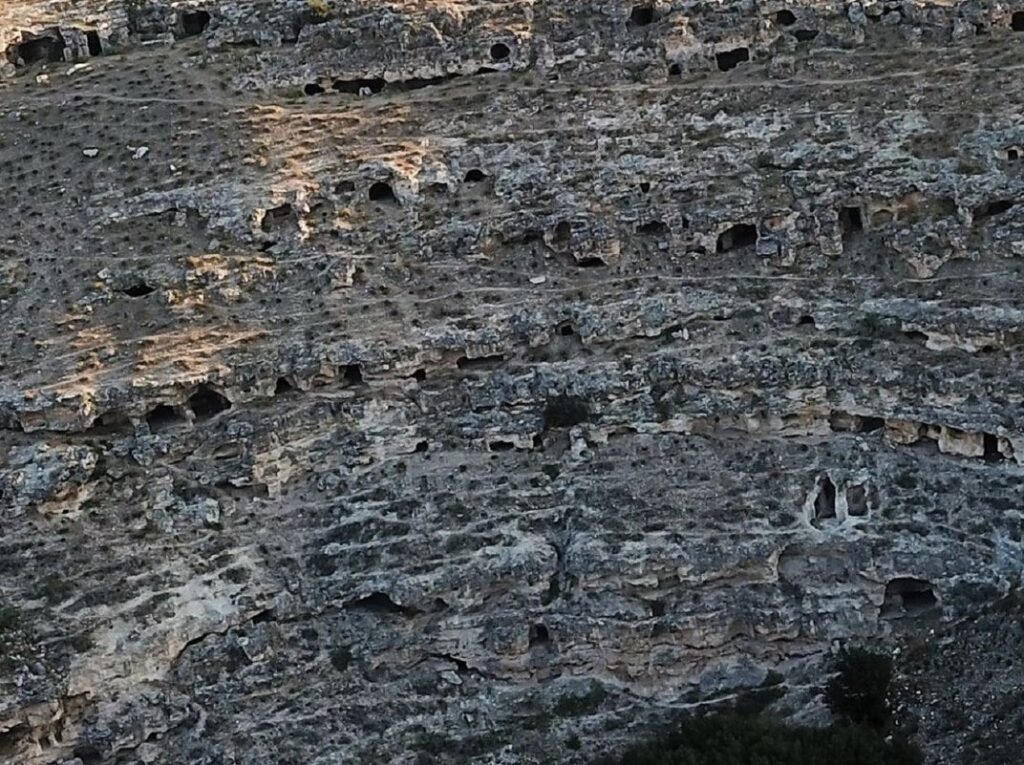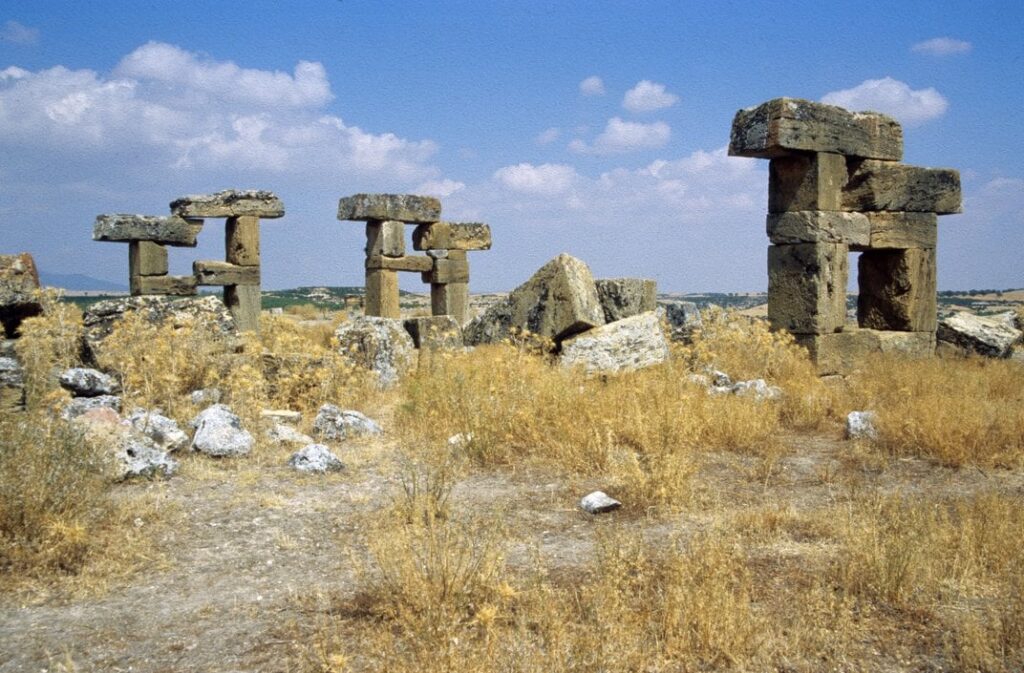Hundreds of Ornate, Rock-Cut Tombs Discovered in Ancient Turkish City
Some 1,800 years ago, residents of Blaundos buried their dead in highly decorated graves cut into the sides of a surrounding canyon.

Excavations at Blaundos in Uşak, Turkey, have revealed 400 rock-cut tombs dated to 1,800 years ago, when the ancient city was under Roman control. Many of the tombs are decorated with images of vine branches, bunches of grapes, flowers, animals and mythological figures, the state-run Anadolu Agency (AA) reports.
Blaundos was located atop a hill and surrounded by a canyon that offered protection from attackers. The tombs were carved into the steep sides of the canyon.
“There are arched sarcophagi carved into the bedrock in front of the walls of each room,” expedition leader Birol Can, an archaeologist at Uşak University, tells AA.
“Apart from these, places that are thought to be used for funeral ceremonies were also found inside the rock tombs. The main door of the tombs was closed with a marble door and reopened during burial or ceremony times in the past.”

Some of the tombs have only one chamber, while others are “complex structures formed by arranging rooms one after the other,” Can says to Live Science‘s Laura Geggel.
“These rooms were not created in one go,” he adds. “It is understood from the traces on the walls that these tombs were originally designed as a single room.
However, in time, when there was no place for burial in this single room, the room was expanded inwards and the second, third and then the fourth rooms were added.”
Archaeologists have been aware of the rock-cut necropolis—one of the largest burial sites of its kind in the world—for more than 150 years. But researchers only began systematically excavating Blaundos in 2018. Aside from the tombs, writes Argun Konuk for Daily Sabah, the team has identified temples, a theater, a public bath, aqueducts, a state building, a stadium and more.
“Apart from these, we know that there are many religious, public and civil structures still under the ground”.
Over the centuries, grave robbers partially destroyed some of the tombs while removing jewelry and other precious items. But many objects remain.
They include pottery fragments and coins dated to the second through fourth centuries C.E., as well as grave goods like mirrors, rings, cups and oil lamps presumably intended for use in the afterlife.

Murals decorating 24 of the chambers remain visible but are in poor shape.
“Some of these tombs were used as animal shelters by shepherds a long time ago,” “The frescoes were covered with a dense and black soot layer due to the fires that were set in those times.”
A conservation team has cleaned some of the paintings, which include motifs of vines, flowers, wreaths and geometric patterns, as well as mythological figures like Hermes, Eros and Medusa and animals including birds and dogs.
Blaundos was founded by a commander of the same name who served under Alexander the Great after his army swept into Asia Minor in the fourth century B.C.E. Originally inhabited by Macedonians, it later became an important Roman city, notes Peta Stamper for “History Hit.” In the later Roman and Byzantine eras, Blaundos was a seat for bishops leading Christian communities in the surrounding area.
The tombs uncovered so far are just a part of the necropolis. Hundreds of other graves have yet to be excavated. The team also plans to conduct DNA and chemical analyses aimed at determining the ancestry, age, sex and diet of those buried in the ancient city.
